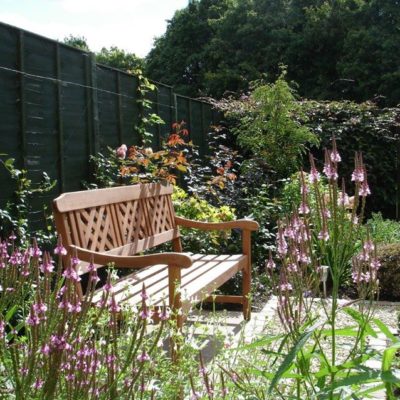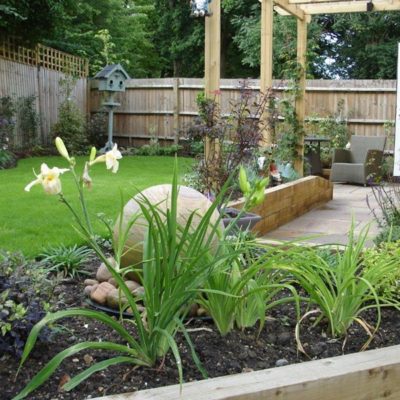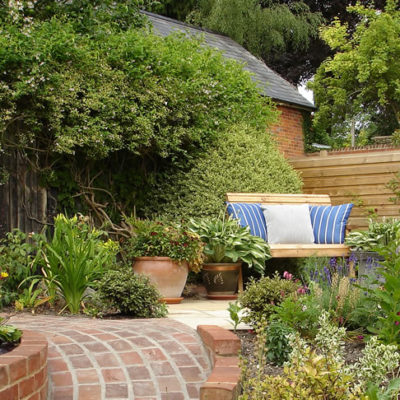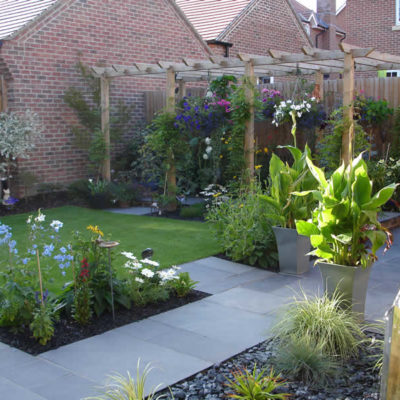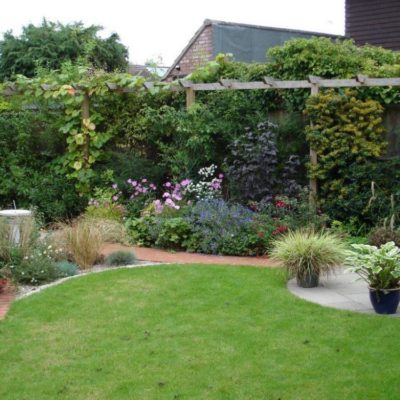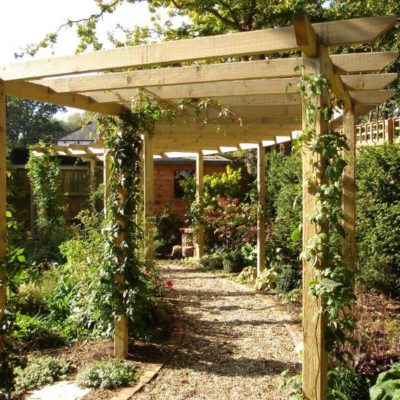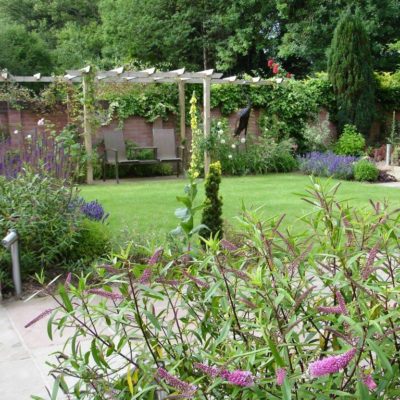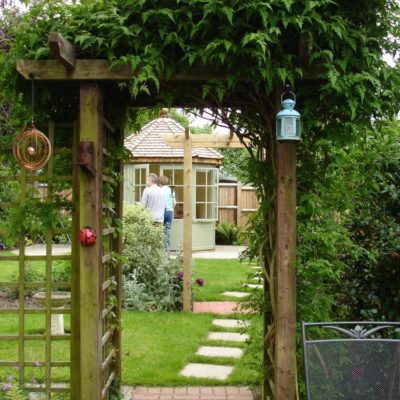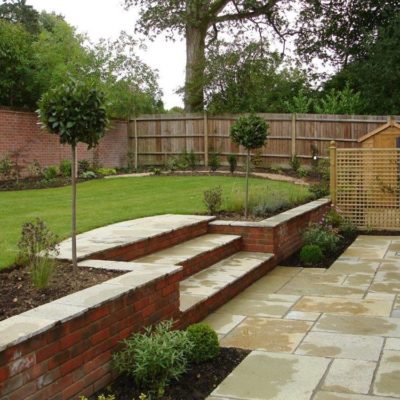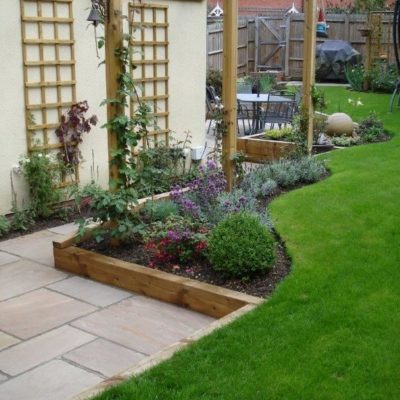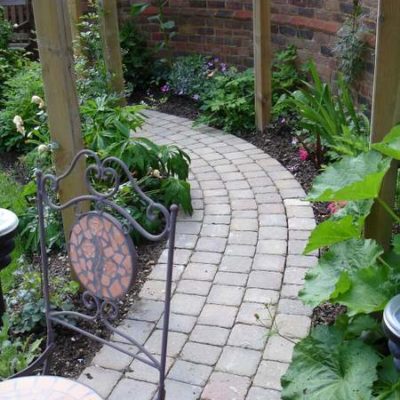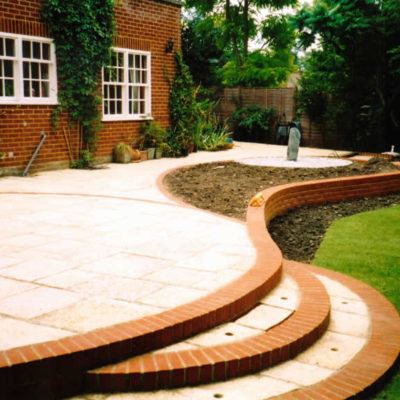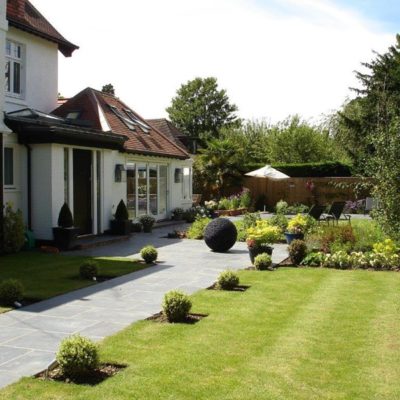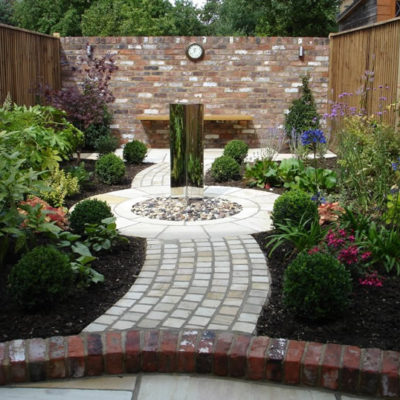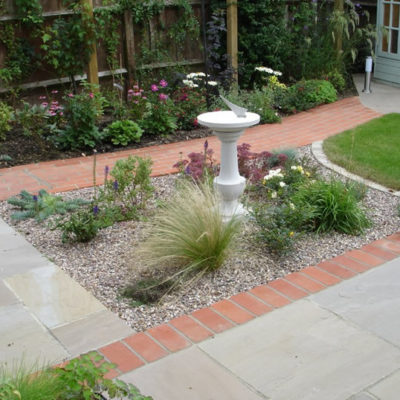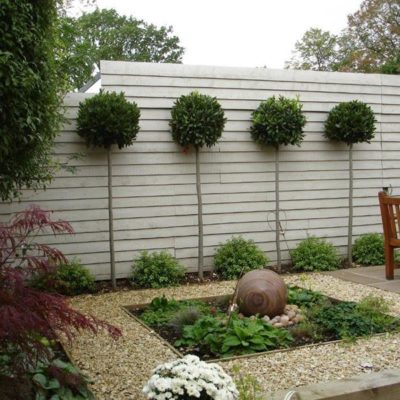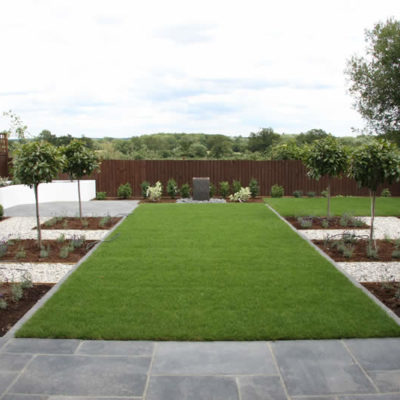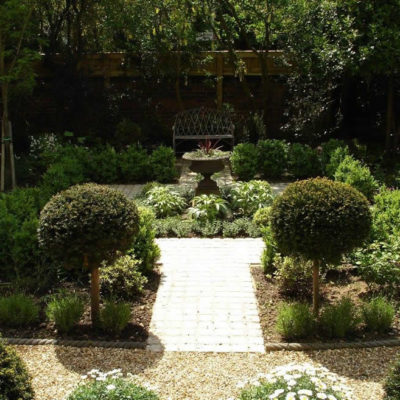Softening the Lines
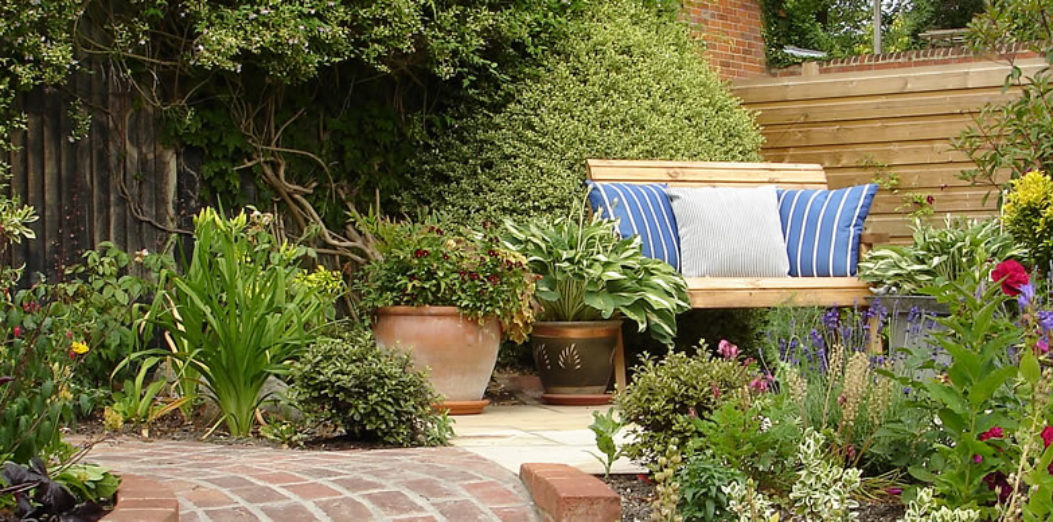
Many of the gardens we work in have starkly rectangular or very angular boundaries. In addition, many modern houses are surrounded by other houses, and in new gardens in particular the surroundings seem to be a mass of brick walls and timber fences. So, as a garden designer, one of my challenges is creating garden designs that soften the harsh lines and stark views. There are a number of ways to do this:
Use of plants
Lots of lovely greenery. Perhaps the most obvious solution. Plants can be used to green up fences, and large evergreen specimens can disguise the boundary, block or screen the view to and from the neighbour’s windows, and soften brick work. Screening plants don’t have to be located at the boundary. Indeed, if positioned closer to your own house, and away from the boundary, the screening or ‘view softening’ plant won’t need to be as tall to do its job.
Use of structures
Arches and pergolas (including single pergolas with just one line of posts) can also be used to help screen and soften views at height, particularly if planted with a suitable climber or two.
Using the shape and angle of the garden components
The introduction of curves, particularly in terms of the lawn, but also with paths and borders (especially lushly planted ones), has a hugely softening effect on the harsh outlines of most gardens. Big sweeping lawn shapes that don’t in any way echo the boundary line are popular with most garden designers.
Use of features and feature plants
Strategically located, these will draw the eye away from boundaries and neighbouring walls and eyesores.
Inner focus
A beautiful, uncluttered cloistered lawn with borders and paths around it will help to focus attention inwards into the garden and away from less attractive views outside the garden boundary. Similarly, a formal garden with strong inner lines of symmetry and possibly a central feature, will pull the whole focus inwards into the garden. This is by no means a new technique – it is simply learning from Moorish and other gardens of many years ago.
By using a combination of these techniques, it is possible to turn even the starkest of new gardens into a green and pleasant oasis.
